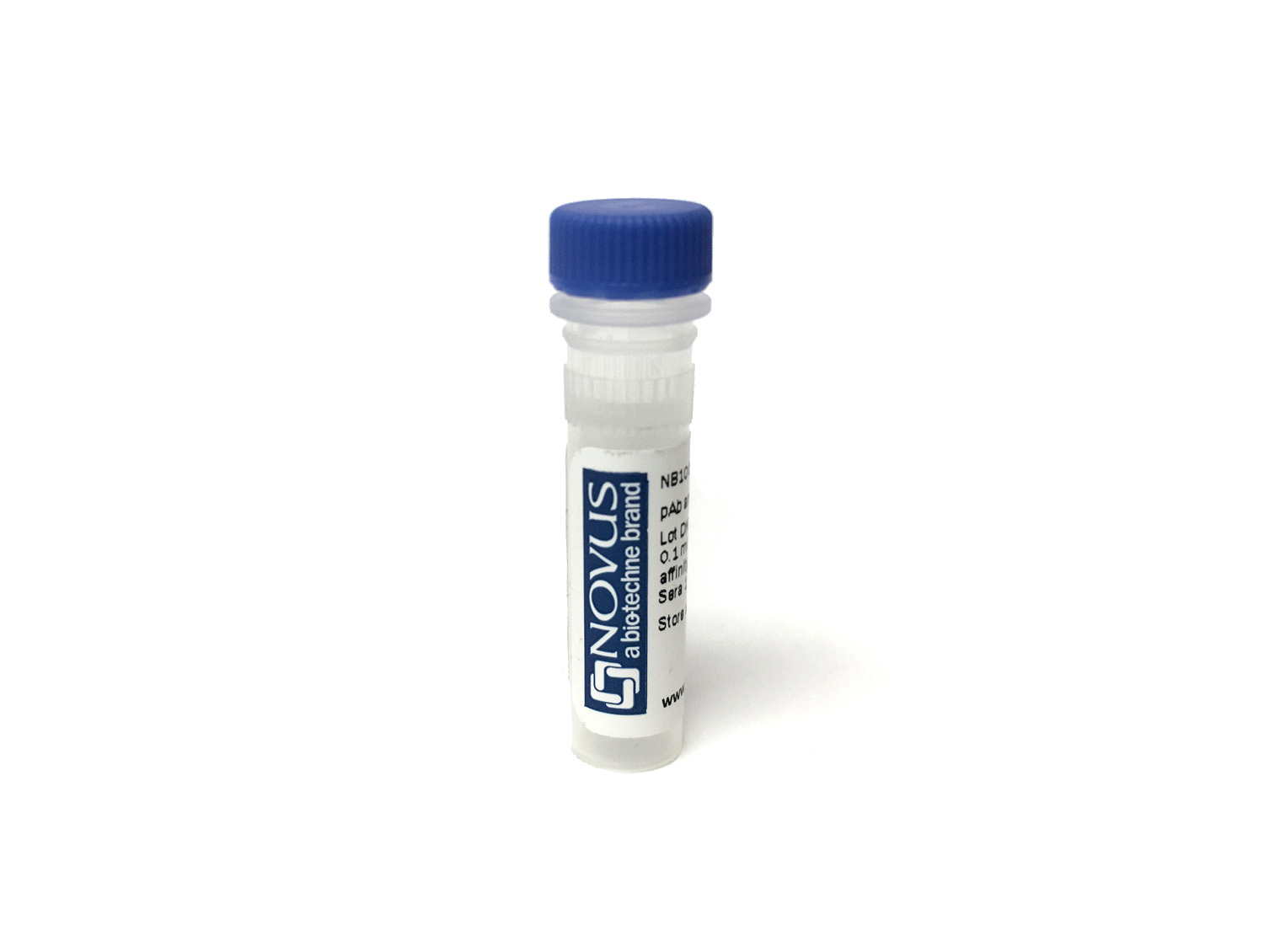Chicken anti-Mouse IgG (H+L) Secondary Antibody [Alkaline Phosphatase]
Novus Biologicals, part of Bio-Techne | Catalog # NBP1-75099


Conjugate
Catalog #
Key Product Details
Species Reactivity
Mouse
Applications
ELISA, Immunohistochemistry, Immunohistochemistry-Paraffin, Western Blot
Label
Alkaline Phosphatase
Antibody Source
Polyclonal Chicken IgG
Concentration
1.5 mg/ml
Product Specifications
Immunogen
This Chicken anti-Mouse IgG (H+L) Secondary Antibody [Alkaline Phosphatase] was developed against purified mouse IgG (H&L).
Reactivity Notes
Based on IEP, no reactivity is observed to non-immunoglobulin mouse serum immunoglobulins
Specificity
Based on IEP, this Chicken anti-Mouse IgG (H+L) Secondary Antibody [Alkaline Phosphatase] reacts with heavy gamma chains on mouse IgG and light chains on all mouse immunoglobulins.
Clonality
Polyclonal
Host
Chicken
Isotype
IgG
Description
Store undiluted liquid at 2-8C. For storage at -20C, dilute with an equal volume of glycerol to prevent loss of enzymatic activity. Prepare working dilutions prior to use and then discard.
Applications
Application
Recommended Usage
ELISA
1:200-1:5000
Immunohistochemistry
1:500-1:5000
Western Blot
1:200-1:5000
Application Notes
This conjugate is suitable for all immunoassay applications.
Formulation, Preparation, and Storage
Purification
Affinity purified
Formulation
30 mM Triethanolamine, pH 7.2, 5 mM Magnesium Chloride, 0.1 mM Zinc Chloride, 1 % (w/v) BSA, Protease/IgG free
Preservative
0.05% Sodium Azide
Concentration
1.5 mg/ml
Shipping
The product is shipped with polar packs. Upon receipt, store it immediately at the temperature recommended below.
Stability & Storage
Store at 4C. After dilution, add an equal volume of glycerol to prevent loss of enzymatic activity and store at -20C. Avoid repeated freeze-thaw cycles.
Background: IgG (H+L)
The 4 IgG subclasses, sharing 95% amino acid identity, include IgG1, IgG2, IgG3, and IgG4 for humans and IgG1, IgG2a, IgG2b, and IgG3 for mice. The relative abundance of each human subclass is 60% for IgG1, 32% for IgG2, 4% for IgG3, and 4% for IgG4. In an IgG deficiency, there may be a shortage of one or more subclasses (4).
References
1. Painter RH. (1998) Encyclopedia of Immunology (Second Edition). Elsevier. 1208-1211
2. Chapter 9 - Antibodies. (2012) Immunology for Pharmacy. Mosby 70-78
3. Schroeder H, Cavacini, L. (2010) Structure and Function of Immunoglobulins. J Allergy Clin Immunol. 125(2 0 2): S41-S52. PMID: 20176268
4. Vidarsson G, Dekkers G, Rispens T. (2014) IgG subclasses and allotypes: from structure to effector functions. Front Immunol. 5:520. PMID: 25368619
Additional IgG (H+L) Products
Product Specific Notices
Chicken products cannot be exported to Canada.
Purity > 95% based on SDS-PAGE. Ig fraction was prepared using eggs obtained from healthy hens of US origin.
This product is for research use only and is not approved for use in humans or in clinical diagnosis. Secondary Antibodies are guaranteed for 1 year from date of receipt.
